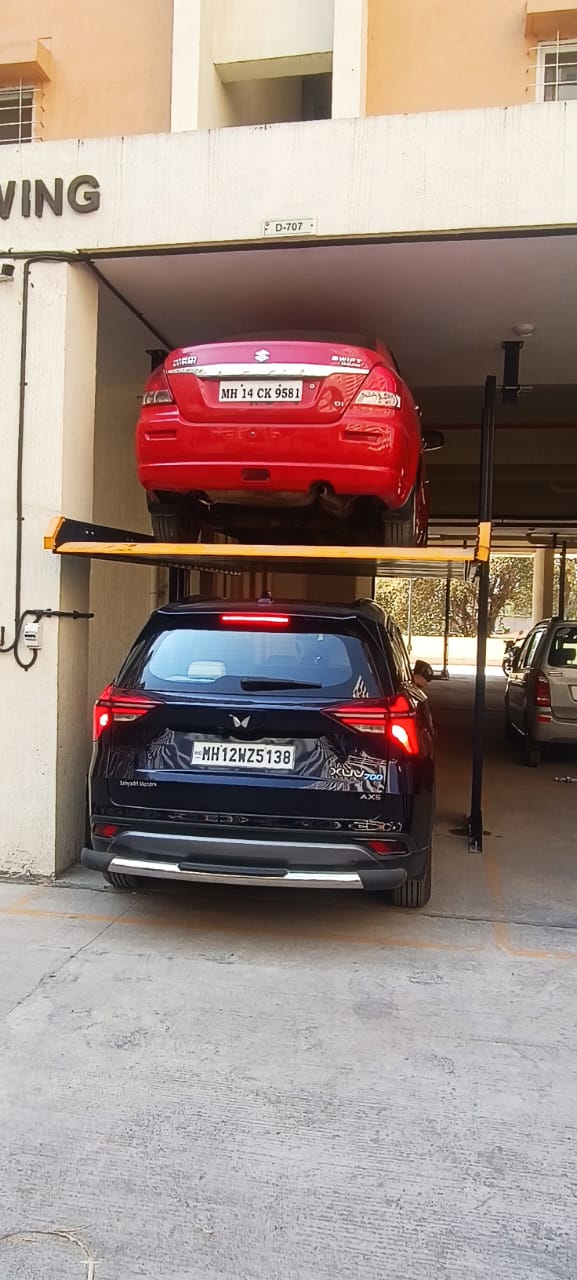India’s cities are growing vertically, yet roads remain congested and packed with millions of vehicles. The demand for space-efficient parking solutions has never been greater. Stack parking systems are innovative vertical car parking structures designed to maximize limited urban space and streamline vehicle management. From high-rise apartments to commercial complexes and shopping centers, stack parking systems are becoming essential in smart city development. This article explores what makes them the future of urban parking.
What Are Stack Parking Systems?
Stack parking systems are mechanical or automated platforms that allow cars to be parked one above the other, utilizing vertical space instead of sprawling land areas. These systems use hydraulic lifts, motors, or automated control mechanisms and come in various configurations, ranging from two-car stackers for residential garages to multi-level automated towers for commercial hubs.
Why Stack Parking Systems Are in High Demand
India has more than 300 million vehicles on its roads, with millions more added annually. Meanwhile, real estate prices in urban areas are soaring. Traditional parking takes up too much space, creates congestion, and is no longer sustainable.
Key factors driving demand include:
- Limited urban land
- High cost of surface parking
- Growing number of private vehicles
- Increased focus on organized infrastructure
- Smart City initiatives promoting automated solutions
Types of Stack Parking Systems
- Two-Post or Four-Post Stackers
Simple vertical stackers for 2–3 cars. Common in residential or small office setups. - Puzzle Parking Systems
Cars move both vertically and horizontally on an automated grid. Ideal for medium-sized commercial or public spaces. - Rotary Stack Systems
Operate like a vertical carousel. Can fit up to 12–16 cars in a small footprint. - Tower Parking Systems
Fully automated systems that can store 20 or more cars. Used in malls, metro stations, airports, and other high-traffic locations.
Benefits of Stack Parking Systems
- Space Optimization: Saves up to 70% of space compared to traditional parking lots.
- Enhanced Safety: Cars are stored securely with limited public access, reducing theft and damage.
- Cost-Effective in the Long Term: Although initial investment is higher, maintenance and land costs are lower over time.
- Environmentally Friendly: Reduces car idling time and air pollution.
- Aesthetic and Modern: Improves the look of buildings with a high-tech touch.
Ideal Use Cases for Stack Parking Systems
- Residential buildings with limited parking areas
- Commercial complexes and IT parks with daily heavy vehicle flow
- Shopping malls and multiplexes requiring mass storage
- Hospitals and educational institutions with high turnover
- Public parking lots in metro cities
- Airports and railway stations needing 24/7 structured parking
Stack Parking Systems and Smart Cities
Stack parking systems are not just practical but also smart. Many Indian cities are integrating them as part of the Smart City Mission, which emphasizes automation, space utilization, and sustainability.
These systems can be integrated with:
- Mobile apps for parking slot booking
- Electric vehicle charging points
- License plate recognition
- RFID and access control systems
- Solar-powered units with backup power
The Future of Stack Parking Systems in India
As India progresses toward becoming a digitally empowered, sustainable nation, stack parking systems will play a central role in urban development. Upcoming trends include:
- AI-integrated parking allocation
- Cloud-managed smart parking grids
- Expansion into Tier 2 and Tier 3 cities
- Custom stack solutions for e-commerce delivery fleets
- Partnerships between real estate developers and parking technology firms
Stack parking systems are more than mechanical innovations; they are the cornerstone of tomorrow’s smart, efficient, and sustainable cities. With benefits ranging from space and cost savings to safety and digital integration, they offer a futuristic solution to one of India’s most pressing urban challenges.For developers, municipal planners, and infrastructure experts, the message is clear: it’s time to go vertical.



